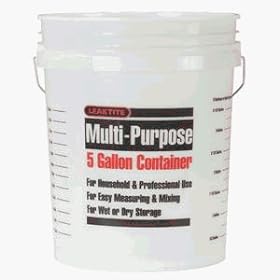Specs
Member
I have just learned that it is very acceptable to use only a primary and it is not necessary to rack into a secondary for further fermentation.
What I would like to fully ferment in the primary. When fermentation is complete I would rack into a different container in order to mix in priming sugars before I bottle.
I am interested in switching over but would like to know if anyone has tips on bottling without stirring up too much sediment. I find even trying to open my 30litre primary lid i stir up a lot of sediment. And also when I am bringing it from the floor to the kitchen table for racking.
Also when using only a primary, is the 6.5gallon plastic pale with drilled lid the best to use?
What I would like to fully ferment in the primary. When fermentation is complete I would rack into a different container in order to mix in priming sugars before I bottle.
I am interested in switching over but would like to know if anyone has tips on bottling without stirring up too much sediment. I find even trying to open my 30litre primary lid i stir up a lot of sediment. And also when I am bringing it from the floor to the kitchen table for racking.
Also when using only a primary, is the 6.5gallon plastic pale with drilled lid the best to use?





